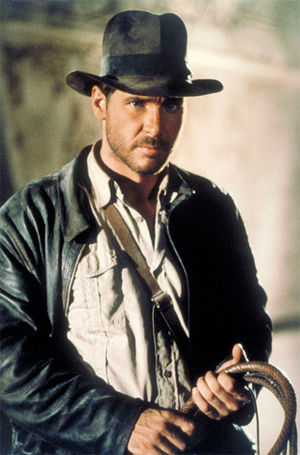As I began yesterday, I’ve started a series on the gamification of the workplace. I think this is something project managers need to understand, because the frameworks that gamification intends to create are directly relevant to the work that we do.
Before I dive into the cool, point-based, leveling-based, achievement-based gaming mechanics that are currently all the rage, it wouldn’t be fair to leave out some of the more base aspects of gaming that influence behaviour. They may not be as glamorous as an achievements framework, but are important aspects of gaming nonetheless.
To begin, the most fundamental purpose of gaming is as diversionary entertainment. For as long as mankind has been able to speak, there’s been a tacit, communal acknowledgement that the real world can be kind of…lame. Reality isn’t perfect. Reality isn’t flawless. And there are glitches in “Real World 1.0 Beta” that don’t seem to be addressed in a forthcoming service patch (has anyone even seen release notes?) It’s because of this fact, we as a species have developed archetypes through which to seek escape from the buggy quagmires that are our lives. These archetypes are the product of storytelling, which is an art as old as humanity.
Storytelling allows us to flee the real world, and immerse ourselves in an alternate reality where we can relate with a hero for a little while. We know the hero isn’t us, but we get to pretend we understand the hero, and walk in his or her shoes for as long as we immerse ourselves. The hero isn’t flawed in the same way that we are flawed. The hero is a stripped down version of all the things we’d like ourselves to be. For example, while many of us grew up on the adventures of Indiana Jones, we never got to see him whimpering like a little girl, locked in the bathroom with a scorching case of traveler’s diarrhea. It likely would have happened to the poor man (had he been real: I’m sure it’s happened to Harrison Ford), but we don’t get to know about that part. Moreover, we don’t want to know about that part–it doesn’t befit a hero.

- Image via Wikipedia
When we play a video game, for the most part, we’re taking on the persona of an archetypal character. It’s not always the case: I can’t find anything archetypal about Freecell, for example, but the vast majority of games you find online these days contain an element of storytelling. You’re a giant tree bearing holy fruit trying to defend yourself from evil bugs (The Hero). You’re a demon trying to find a way to send an evil reincarny back to hell (The Outlaw). You own a farm and need to help it thrive (The Caregiver). All of these examples place you in a scenario where you have to suspend disbelief and accept the archetype with which you’re credited (which could be one of many).
Why are archetypes an important part of gamification? Because archetypes are constructs designed to influence how we act in response to certain situations.
Even in ancient times, the powers-that-were used archetypes as a tool to educate the masses to drive specific behaviours. The legend of Persephone is the cautionary story of the Innocent Archetype. A girl, abducted by Hades to the underworld has a chance to escape…but little does she know anyone who eats food in the underworld is doomed to spend eternity there. Hades tricks poor Persephone into eating pomegranate seeds while she’s still down there, and her fate is sealed. Today, instead of going into details, we just tell our children not to get in a creepy, unwashed van with strangers…the words and names might be different, but the purpose behind the story is the same. By telling a archetypal story, we encourage our listeners to behave (or not behave) in specific ways. Think of it as the original idea marketing.
Indeed, advertisers have long known about the power of archetypes. How often do you turn on the television to find yourself in the shoes of the protagonist of a commercial? “Buy this cereal and you can be just like our hero! You’ll be sexier…smarter…richer…overall just a better person…than the person you are now (I mean, euw!).” Active Imagination Sports Marketing identifies twelve common archetypes used in advertising, and calls out the desires, goals and fears held by the observer of each one. The concept isn’t new.
I’ve written about the concepts of archetypes before, which is why I’m a big fan of the TV show Glee. Breakfast Club, the iconic teen movie from the 1980s is another good example. Segregate fictional characters by specific traits and amplify those traits to make a point: the results can influence the viewer’s subsequent behaviour, attitudes…even their identity…depending on whether or not the viewer felt the character was worth identifying deeply with. That’s pretty powerful stuff!
How powerful is it?
Take a look at the success of this year’s Old Spice Guy. Isaiah Mustafa portrayed a deliberately crafted construct of the “uber man”…impossibly perfect in every way. The result? An increase in sales of 107%. 1.4 billion campaign impressions and Old Spice is the #1 all-time most viewed branded channel on YouTube. Old Spice body wash is currently the #1 brand of body wash for men. That’s kind of impressive.
Related articles by Zemanta
- Gamification of the Workplace – Introduction (edge.papercutpm.com)
- Gamification Gets Its Own Conference (nytimes.com)
- Maritz and Bunchball Team up to “Gamify” Customer Loyalty & Employee Engagement (eon.businesswire.com)
- RPG Character Creation – Archetypes (Mechanical versus Narrative) from tenletter ” rpg (tenletter.wordpress.com)

